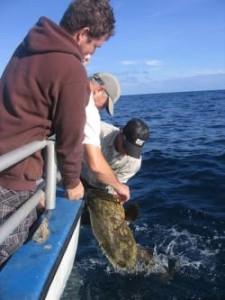The third week of September started out as snake week for me. On Sunday I came home from a tournament at West Point and backed my boat into the garage. After taking some things in the house I unhooked the boat and something just didn’t look right under the boat. When I looked closer there was a four foot long black snake slowly crawling across the floor.
Monday I was cutting the field at my farm and on one pass I noticed something white where I had cut on the last pass. It was a three foot long black snake that had gotten too close to the bush hog blade. Laying on its back, its white belly really stood out.
I hated to kill the one at the farm and did not bother the one in my garage. Snakes won’t bother you if you leave them alone and they eat mice and other vermin. I have always been interested in snakes and they don’t worry me much.
The two in September were both what we called “black runners” when I was growing up on the farm. We liked having them around the chicken houses since they ate the rats that ate the chicken feed, but they could be a problem since they would eat eggs, too.
My mom was terrified of snakes and dad would sometimes walk into the house with a king snake wrapped around his arm. We knew king snakes were good snakes since they ate rats and would kill poisonous snakes. He taught me how to identify dangerous snakes and how to catch the non-poisonous ones.
The church I attended had an old pond behind it. The concrete dam had a square overflow spillway and the water in it was about 15 feet down since the pond had been drained. We used to go out there and play after church.
One day when I was about 12 years old we went back there a water snake was trapped in the spillway. I went home and made a snake catcher, a long pole with a cord running down its side through staples and had a loop at the end. I rode my bicycle back to the church the next day, taking my snake catcher and an old metal minnow bucket, the kind with a top that had a clip to keep it closed, with me.
The snake was still there and I managed to catch it with the loop. It was not happy but I got it in the bucket and took it home. Mom was not happy with my new pet!
I tried to keep that water snake in a wooden box but the next day it was gone. I am pretty sure it got out on its own and my mom didn’t make dad release it. Snakes can get through a tiny hole, much smaller than you would think.
I don’t even kill poisonous snakes unless they are a problem. A couple of years ago I was fishing at my pond and noticed a snake head at my fish basket. I picked up a stick and shooed it away but it came right back. The second time I ran it off I saw it had a triangular head, the sign of a viper. It was a young cotton mouth.
The third time it came back I got my pistol out of the truck and shot it in the head, since I did not want to be worried about a poisonous snake at my feet while I fished. Since I like to eat anything I kill I skinned it, much easier than I expected after cutting off its head, gutted it and cut it into four inch long pieces.
It tasted pretty good after flouring it and frying the pieces, but since it was only about three feet long there was not much meat on it.
One snake almost gave me a heart attack. I came home from work one sunny early spring day back in the 1980s and decided to walk through the garden. As I took a step I realized I was about to put my foot on a huge black snake lying in the sun and did a one leg hop about three feet back.
That snake lived around my house for years and I saw it fairly often. One day my dog kept barking at something under the deck and when I looked it was coiled on one of the supports in the corner of the deck. And I would see it sunning on some days in the garden. I watched carefully where I stepped after the thrill of almost stepping on it.
One day I was working on my well pump, kneeled on the floor of my well house. I had been in and out several times getting tools but one time when I stood up, on a shelf at eye level, there was a snake skin on it. It had not been there when I had kneeled by the pump a few minutes earlier.
That big black snake had shed its skin right over my head. The skin was perfect, you could see the bumps on the head end where its eyes had been. That six foot, two inch skin was pinned on my wall for several years.
Snakes are good in many ways so don’t fear them, just respect them and what they do. Find out about them and realize they are just part of the natural world.
